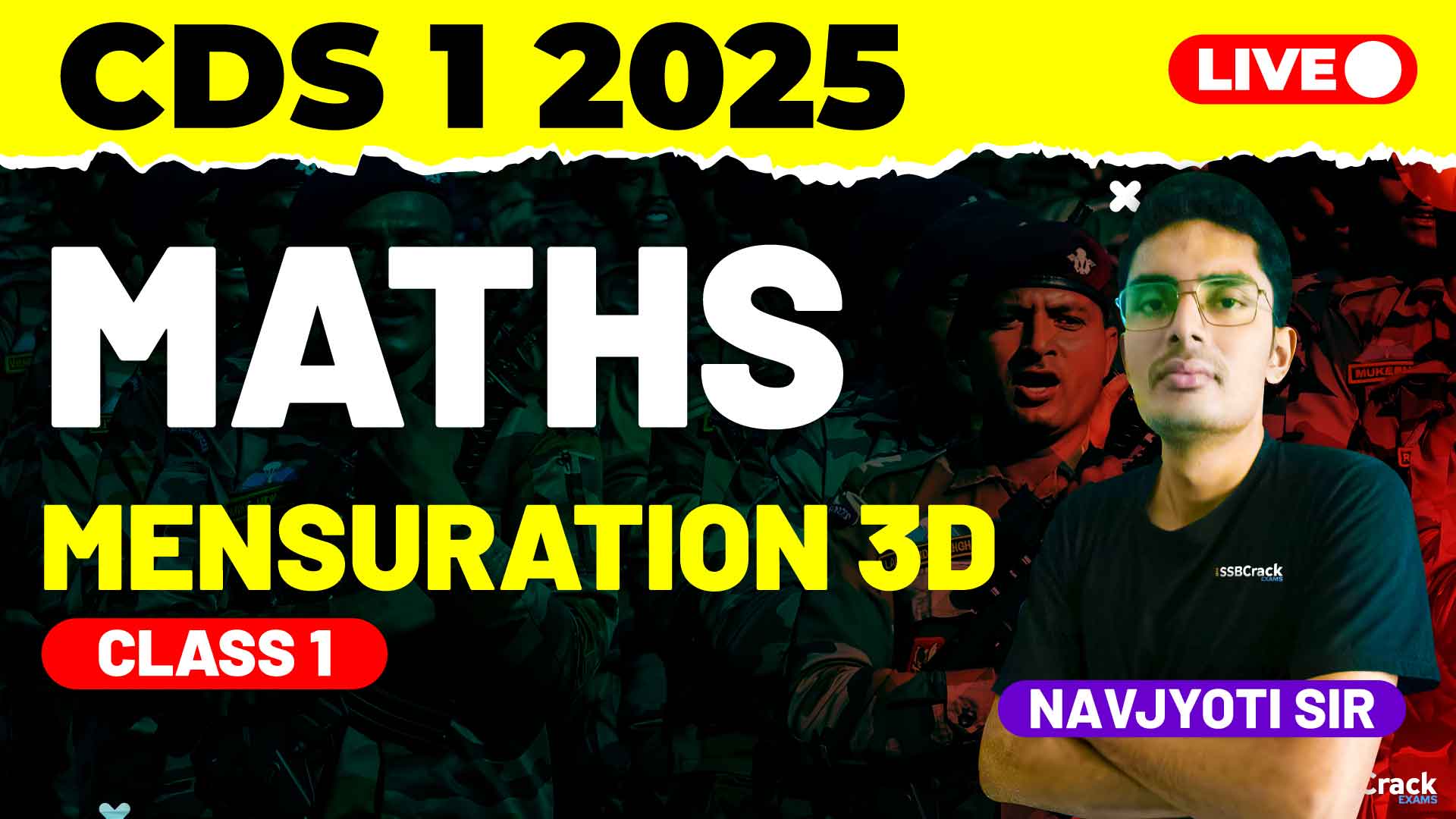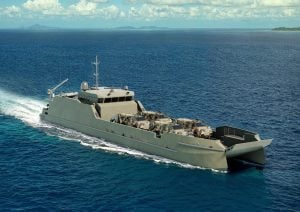Mensuration 3D is a critical topic in the Maths section of the Combined Defence Services (CDS) Exam, requiring a solid grasp of three-dimensional shapes, volume, and surface area. In the recent class on Mensuration 3D, we focused on core shapes—cubes, cuboids, cylinders, and cones—and discussed how to calculate their volume, units, lateral and curved surface area, as well as total surface area. This blog will outline the main points discussed in the class, and provide strategies for efficiently mastering Mensuration 3D to perform well on the CDS Exam.
Key Topics in Mensuration 3D
In this class, we explored foundational 3D shapes and their measurements:
- Volume
Volume measures the capacity of a 3D object, essentially indicating how much space an object occupies. Each shape—cube, cuboid, cylinder, and cone—has specific ways to calculate volume. CDS questions often involve complex scenarios, requiring an understanding of how to apply these volume principles effectively. - Units
Understanding units is essential in Mensuration 3D since calculations for volume and surface area differ depending on the units used (e.g., cubic units for volume and square units for area). Being mindful of units in each question ensures accuracy, as even a minor unit mismatch can alter the answer. - Surface Area
Surface area calculations in Mensuration 3D involve three main concepts:
- Lateral Surface Area: This represents the area of just the sides of a shape, excluding the top and bottom surfaces. For instance, when calculating the lateral surface area of a cuboid, only the side faces are considered.
- Curved Surface Area: This term is specific to rounded shapes, like cylinders and cones, where the curved surface needs special treatment in calculations.
- Total Surface Area: Calculating the total surface area involves summing up all external surfaces of a shape. Knowing this calculation is essential, as CDS questions may ask for the total surface area of combined shapes or require deducting specific sections.
Focus Shapes Discussed in Class
We focused on these shapes, analyzing their unique properties and practical applications:
- Cube
With all sides of equal length, cubes are some of the simplest shapes to work with in 3D mensuration. We explored various types of questions involving volume and surface area, paying attention to cases where only parts of the cube might be relevant for calculations, like painted faces or missing sections. - Cuboid
Cuboids, or rectangular prisms, offer more flexibility in terms of dimensions, with length, width, and height differing from each other. Many real-world objects resemble cuboids, so CDS questions on cuboids may involve scenarios such as finding the amount of material needed to construct or cover a cuboid-shaped box. - Cylinder
Cylinders introduce curved surfaces, making them distinct from cubes and cuboids. We discussed real-world applications like cylindrical containers, emphasizing how to differentiate between lateral, curved, and total surface areas in calculations. Volume calculations in cylinders are commonly tested in exam scenarios involving capacity or filling amounts. - Cone
With a distinct base and sloping surface, cones require a unique approach in 3D mensuration. Cones are often tested with questions about curved surface areas or capacity-related scenarios, like calculating the volume of a conical structure.
Strategies to Prepare Mensuration 3D for the CDS Exam
- Establish a Strong Foundation in Basic Geometry
Mensuration 3D builds upon basic geometric principles. Ensuring a clear understanding of fundamental shapes, their properties, and related measurements will ease the transition into more complex 3D shapes. Visualize each shape to see where each measurement applies, which helps in understanding the underlying concepts rather than rote memorization. - Practice with Units and Conversions
CDS questions often involve varying units, so being confident with unit conversions is essential. Volume is usually in cubic units, while surface area uses square units. Familiarize yourself with common conversions (e.g., cubic meters to liters) to ensure your answers are accurate. - Real-World Applications for Better Understanding
Relate each 3D shape to real-world objects. For instance, visualize a cube as a storage box, a cuboid as a room, a cylinder as a water tank, and a cone as a funnel. Real-world examples make it easier to grasp concepts, improving your ability to remember and apply formulas. - Solve Past Papers and Sample Questions
Reviewing CDS past papers will reveal the types of questions frequently asked in Mensuration 3D. Many of these questions require more than one concept, so familiarity with past questions helps identify patterns and refine problem-solving speed and accuracy. - Use Flashcards for Formula Review
Mensuration 3D includes multiple formulas, and keeping them accessible in flashcard form can be useful for quick reviews. Periodically test yourself on these formulas to ensure you retain them for exams. - Break Down Complex Problems
Some Mensuration 3D questions might combine shapes or ask for specific surface area sections. Practice breaking down such questions into simpler parts, solving each segment individually, then combining results. This approach minimizes errors and builds confidence in tackling complex problems. - Time Management
Mensuration questions can sometimes be time-consuming. Set a timer while practicing and aim to solve each question within a specific timeframe. Practicing under timed conditions will enhance your ability to work efficiently during the actual exam.
Conclusion
Mensuration 3D is a vital component of the CDS Maths syllabus, requiring a clear grasp of the volume and surface area of fundamental shapes like cubes, cuboids, cylinders, and cones. In our recent class, we explored practical problem-solving techniques for each shape, emphasizing volume and surface area calculations. With strategic preparation, a solid understanding of units, and consistent formula review, tackling Mensuration 3D questions can become manageable and even rewarding.
As you continue your preparation for the CDS exam, remember to balance speed with accuracy and visualize each shape for a clear understanding of its properties. By mastering Mensuration 3D, you’ll be equipped to answer a variety of questions confidently, ensuring that this topic contributes to a strong overall performance in the Maths section.



















